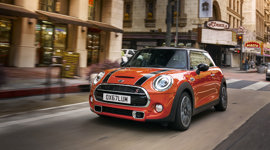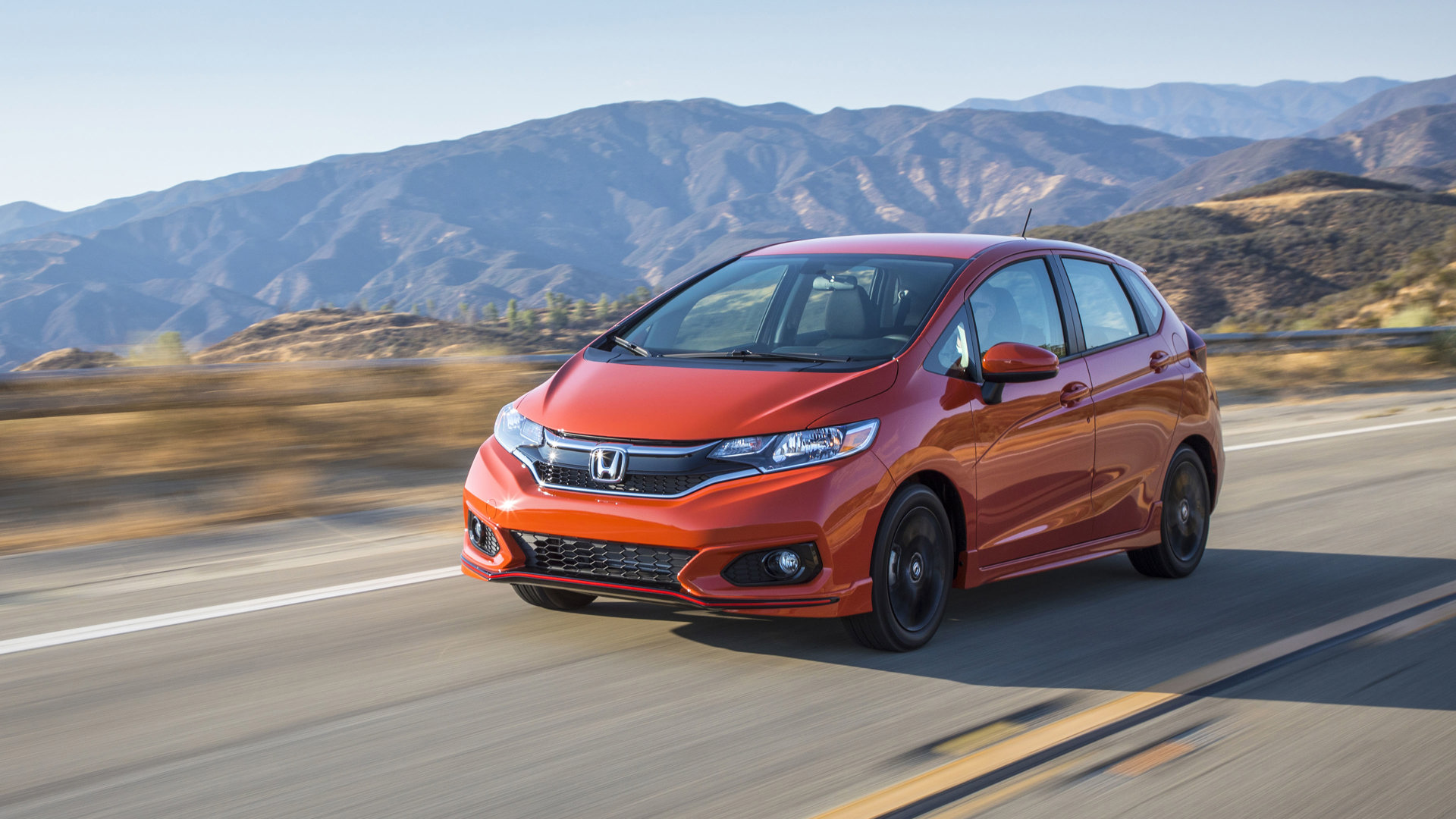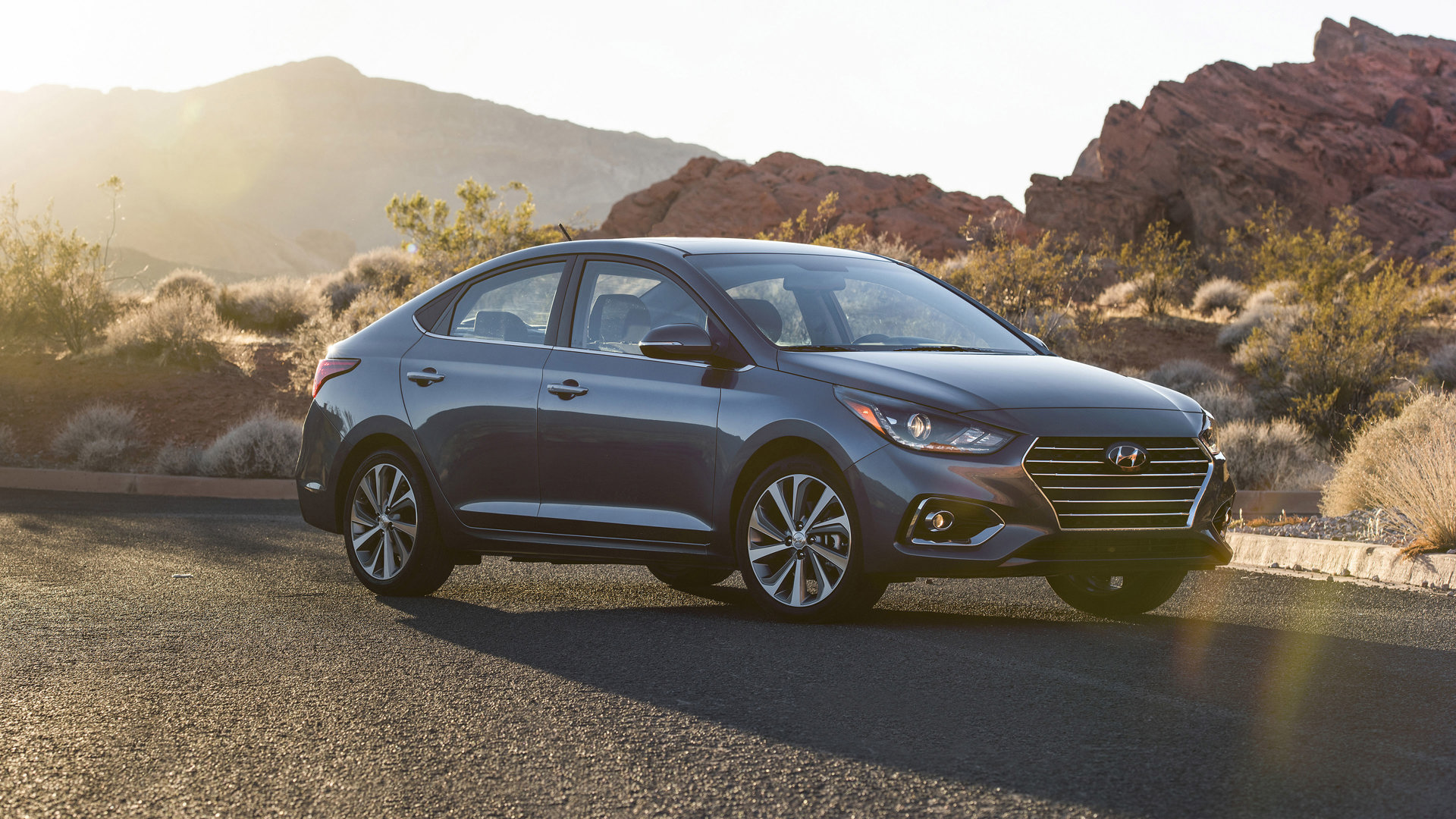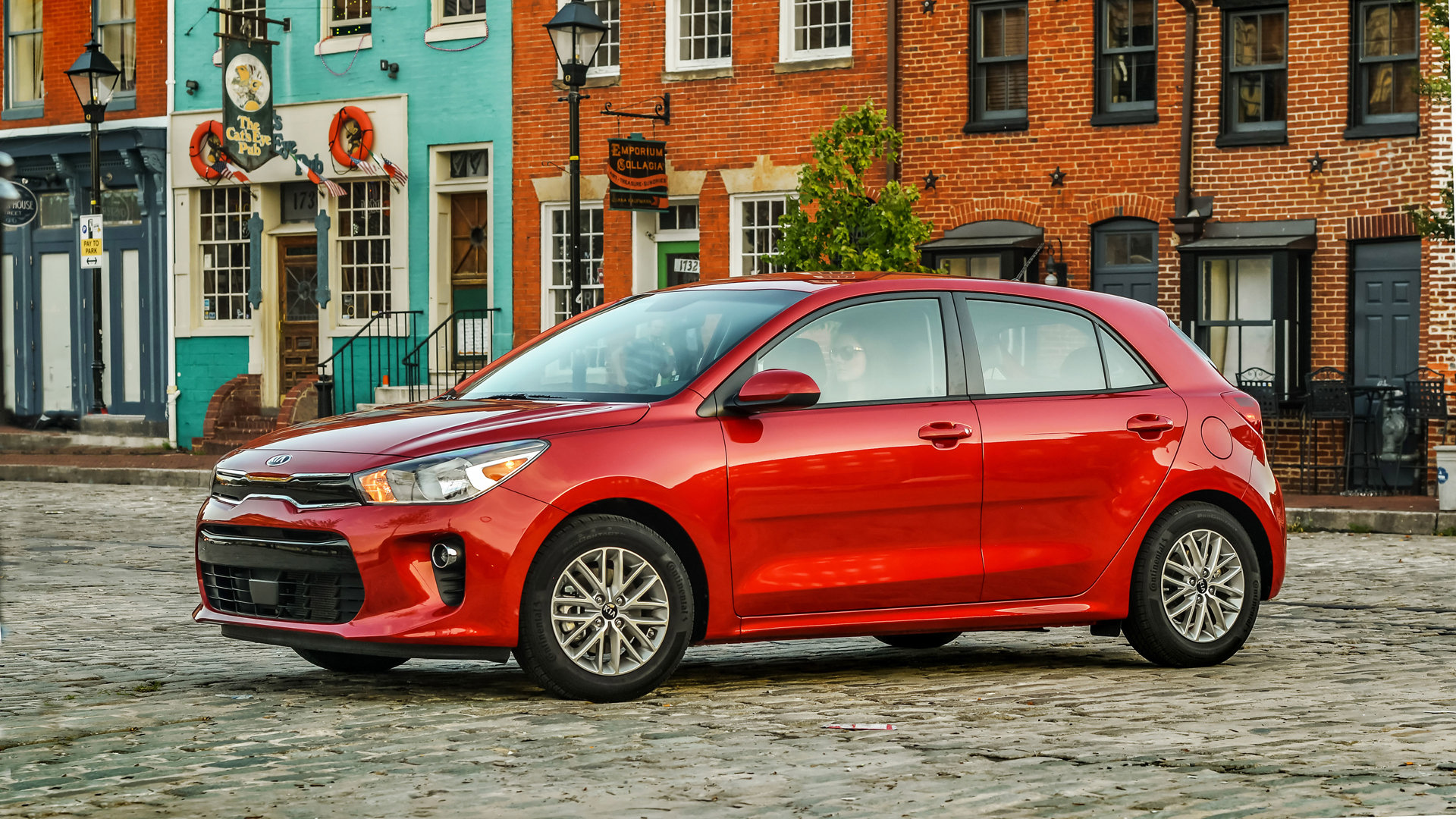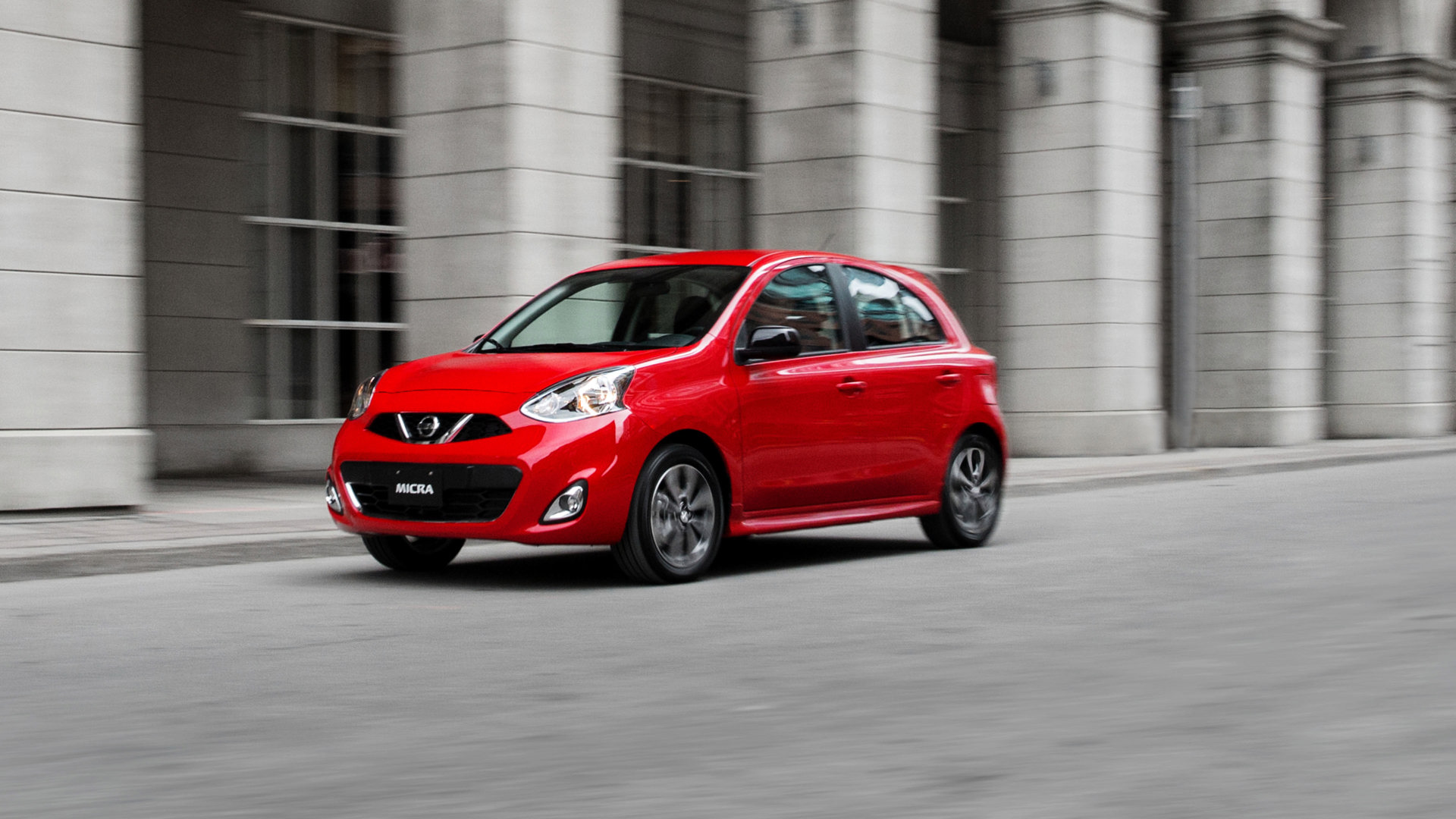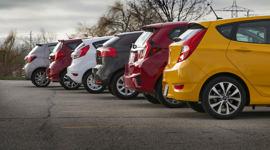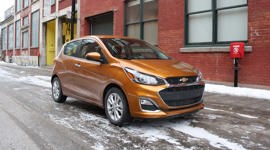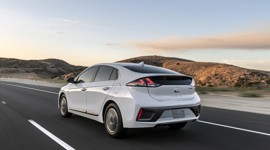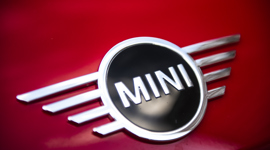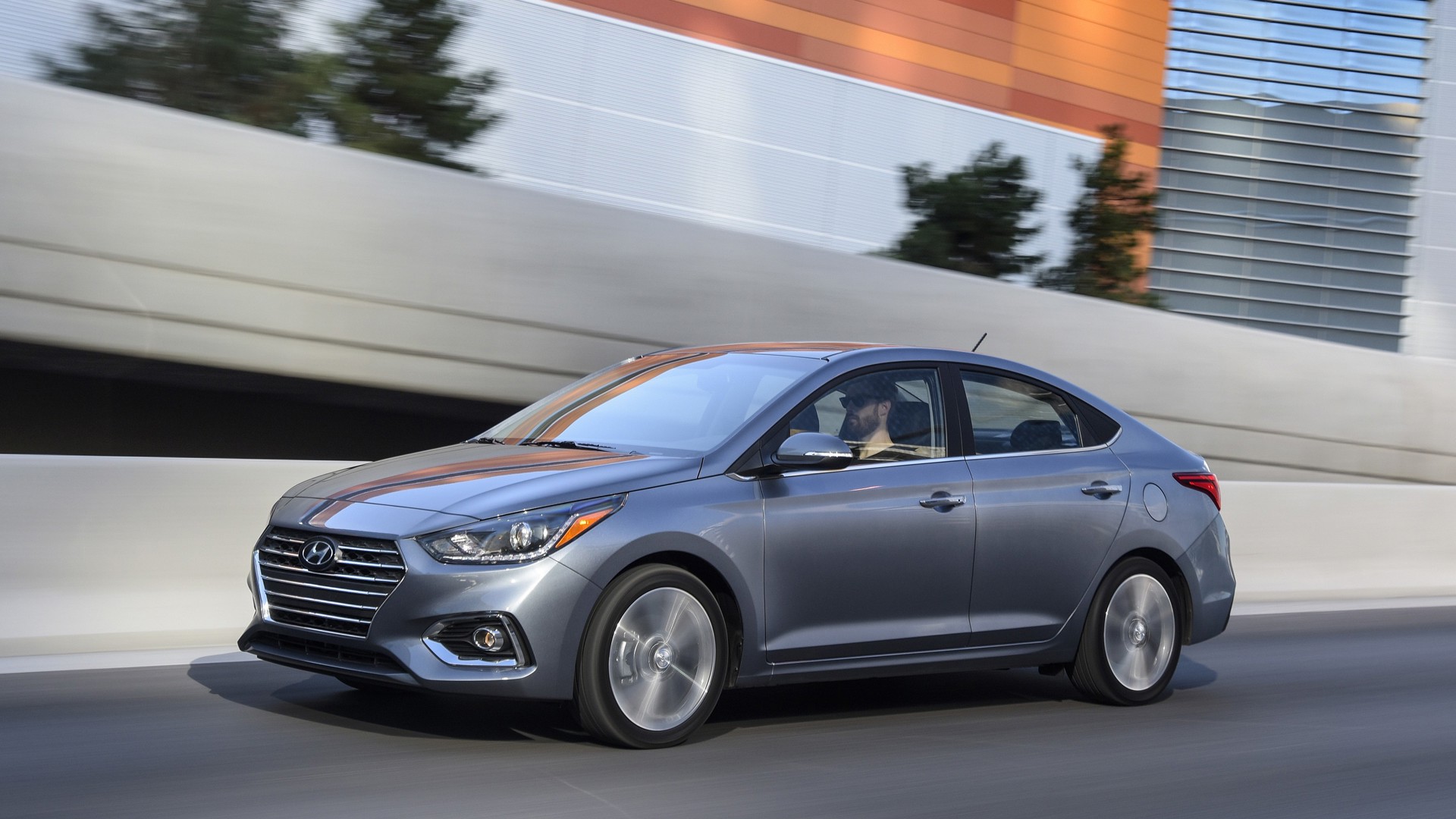More affectionately known as the “cheap and cheerful” class, the subcompact car segment has evolved into one that’s decidedly more sophisticated, while retaining the value that’s endeared it to so many. Consumer expectations have grown in direct proportion to the intensity of competition among automakers – and nowhere is this more evident than in the affordable small car market. Factors including the number of new entries into the segment, the explosive popularity of crossovers, and the pressure to revive the dwindling interest of young urban buyers have combined to turn up the heat on automakers, forcing them to find new ways to stay competitive.
A generation ago, budget-minded buyers had to settle for limited options and dreary styling when making an economical or fuel-efficient choice. Today, eye-catching design, cutting-edge connectivity, and the trickle-down of sophisticated safety technology from the premium segments have given the subcompact driver a wide array of genuinely good cars from which to choose.
Which only made our job jury’s of arriving at a shortlist of autoTRADER.ca Awards finalists more difficult. Our team of 20 professional automotive reviewers has tested and evaluated every single car in this category, participated in back-to-back group comparisons, and analyzed all the accumulated data to finally arrive at this list of finalists. From these, we’ll vote to select the overall winner, which will be announced Jan. 20, 2020. In this segment, our jury of automotive experts are looking for value, practicality and efficiency, first and foremost, but will also consider how a subcompact car punches above its small price with quality and features. A winning subcompact car should not be a penalty box for people on a budget, meaning our judges still expect a level of refinement and quality. Here is more information on our finalists.
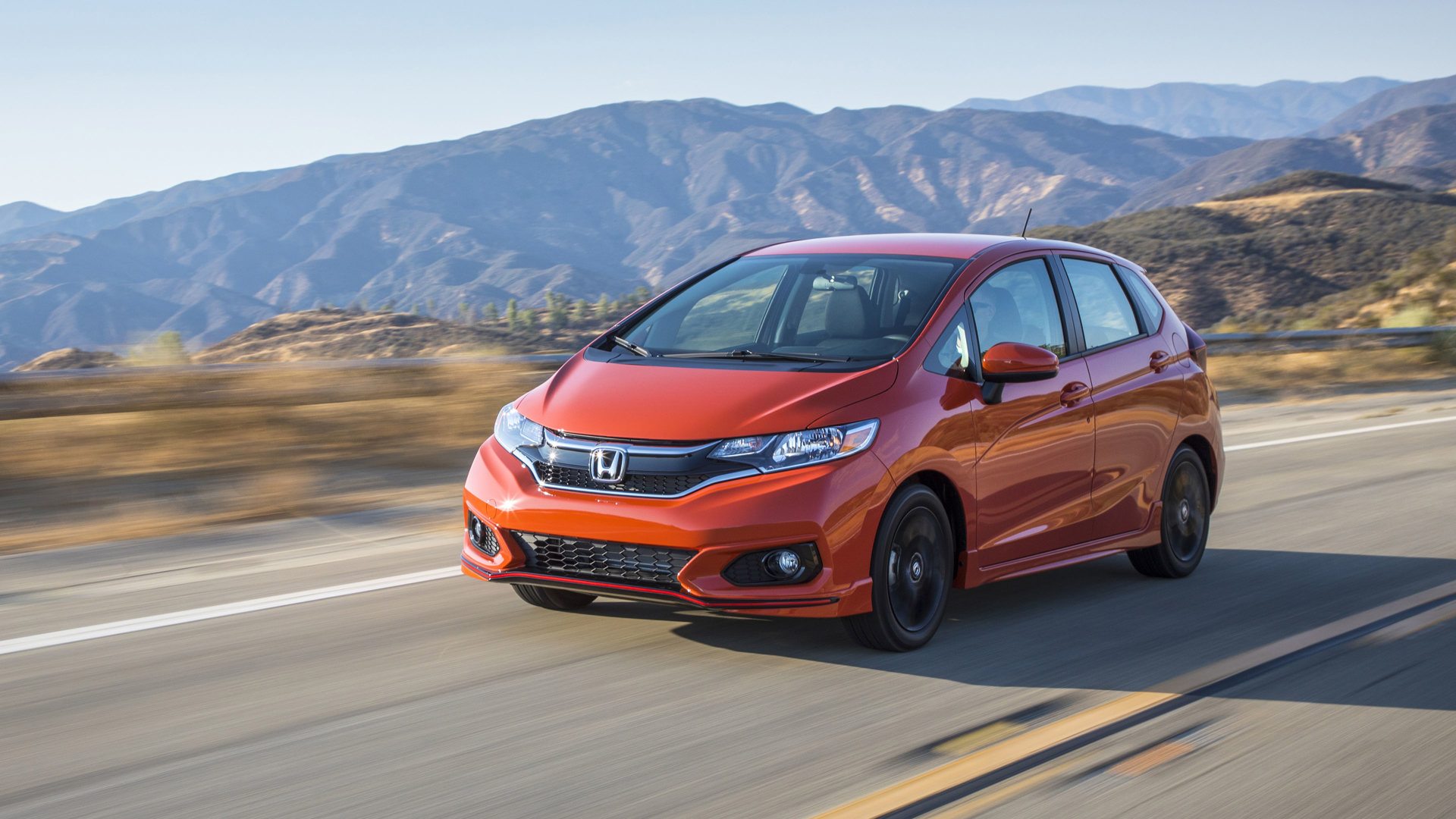
Honda Fit
It’s no secret that we here at autoTRADER.ca have a fondness for the Honda Fit – I liked it so much I bought one. Honda’s entry-level subcompact has been almost unanimously lauded by the automotive experts since its arrival here in 2007, and it’s easy to stand behind the Fit as a top pick in the segment. Reliability is excellent, fuel consumption is miserly, and it’s the undisputed Tardis-like champion of cargo capacity. Few small cars have offered this much value in such a small footprint. Now in its third generation, the Fit was refreshed last year, with a do-over coming for 2020.
The current Fit is more powerful, roomier, and has a wealth of technology and creature comforts; but the first-generation car was a heck of a lot sportier. Turns out that the average budget car buyer wants a more cushioned ride, and prefers a gearbox that delivers better fuel numbers over snappier shifts. It’s still hands-down a top choice in its class, but the third-generation’s refinement sacrifices some of its engaging character. Instead of neutral rotation when turning in at tight corners, the current Fit dials in just a smidgen of safe understeer. The Fit has more rear legroom than the mid-size Accord, and its “Magic Seat” system enables the rear seats to flip up, providing open space behind the front passengers for packages, gear, or even a bicycle. Fold the seats down and there’s an astonishing 1,492 litres of cargo room. That puts it into crossover territory. Aside from its voluminous cargo capacity, the Fit also has numerous little cubbies and pockets that make it a terrific little road trip car. There’s a place for all your stuff – phone, junk food, sunglasses, even a nifty pull-out cupholder beside the steering wheel. All but the base DX model come standard with a seven-inch touchscreen featuring Apple CarPlay and Android Auto.
Behind the Fit’s squinty face is a 1.5-litre four-cylinder that puts out 130 hp when mated to the six-speed manual, or 128 hp with the continuously-variable transmission, and 113 lb ft of torque. All CVT-equipped, upper trim models come with the Honda Sensing suite of advanced driver assist and safety technology, including lane keeping assist, adaptive cruise control, and forward collision warning with collision mitigating brake assist. Fuel economy is 7.0 L/100 km city and 5.9 L/100 km highway for the manual model and 6.5 L/100 km combined for the CVT. Pricing ranges from $17,276 to $26,176.
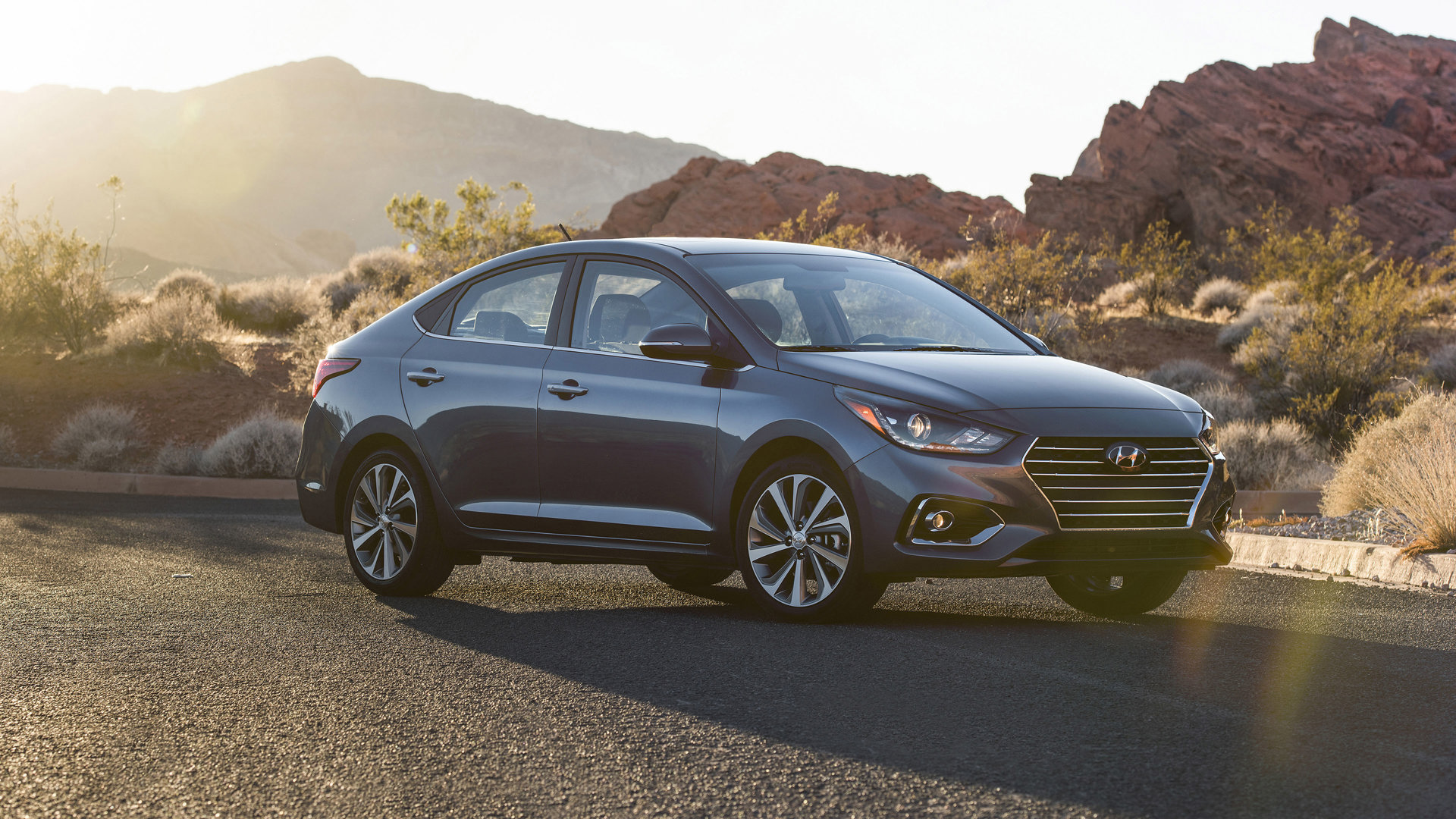
Hyundai Accent
Now in its fifth generation, the Hyundai Accent is Canada’s top-selling subcompact car. Over the years, it has evolved into an attractive compact that’s available as a sedan or hatchback (though the sedan will be discontinued in 2020). In sedan-guise, the Accent’s modern styling gives it the appearance of a smaller Sonata – Hyundai’s much-lauded mid-size sedan – while the hatchback boasts flexible practicality wrapped in a cute and sporty package.
Nothing about the Accent screams “cheap.” But reflecting its status as an affordable small car, the Accent’s cabin features plenty of plastics, both hard and soft, though the interior is also a reflection of how far the industry has come when creating a pleasing space with budget materials. A variety of textures, stylish execution, and superior sound isolation all belie its price point, and attempt the illusion of a more premium cabin. Rear seats are a bit cramped and could use some more cushioning, however, with 616 litres of cargo space behind them there is plenty of room for gear in the back of the hatch.
Hyundai has won over a lot of customers with its generous list of standard content, and even the base Accent comes with air conditioning, power windows and door locks, five-inch touchscreen infotainment, and Bluetooth and USB connectivity. Moving up through the trim lines adds such features as a seven-inch touchscreen, heated front seats, six-speaker sound system, keyless entry, heated steering wheel, cruise control, forward collision warning with avoidance assist, LED headlights, foglights, sunroof, and automatic climate control.
Powered by a 1.6-litre four-cylinder mated to either a six-speed manual or continuously-variable automatic, the Accent produces 132 hp, and 119 lb-ft of torque. All automatic Accents come equipped with a Drive Mode Select feature, which allows the driver to choose between “Normal” or “Sport” settings, which quickens the car’s steering and shift responsiveness for more “exuberant” driving. Fuel economy is rated at 7.3 L/100 km city, 6.0 L/100 km highway, 6.7 L/100 km combined (CVT). Pricing ranges from $17,349 to $21,299 for the sedan, and $14,899 to $21,599 for the hatchback.
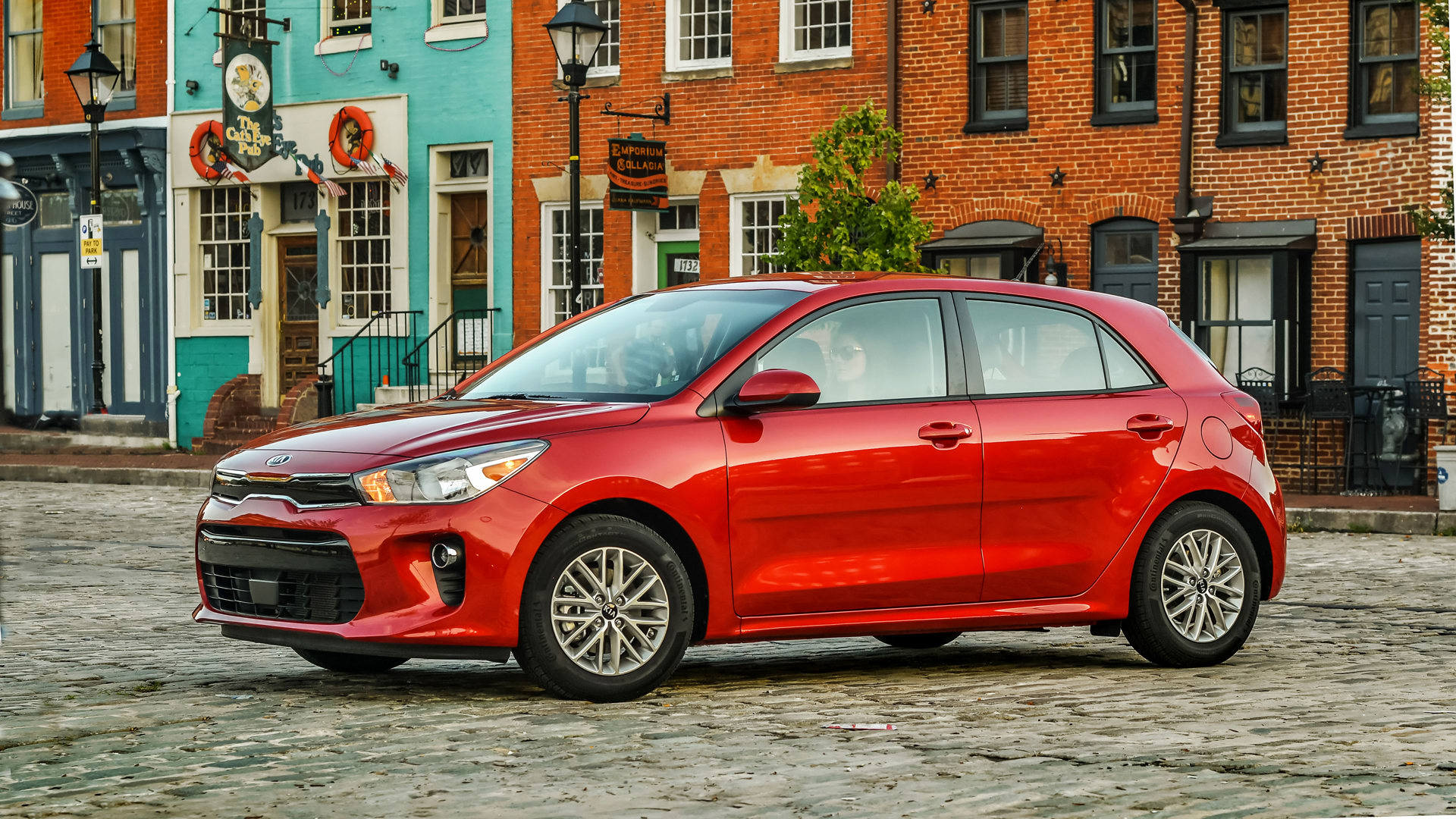
Kia Rio
Refreshed last year, the Kia Rio features the same platform and powertrain as the Hyundai Accent, but with more mature styling. The cabin is simple-yet-stylish, with user-friendly ergonomics. Although the interior’s designed with a little more sophistication than the youthful sportiness that so dominates the rest of the segment, with its low roof and small door openings, the Rio still requires a modicum of flexibility to swing oneself into and out of. Front passengers enjoy plenty of head and legroom, but those in the rear get short shrift – especially when you consider the lofty overhead and generous space of its competitor from Honda, the Fit. At 387 L for the sedan and 493 L for the hatchback, cargo space is average, but the wide, flat trunk floor helps maximize its usefulness.
Standard are heated front seats and a heated steering wheel, rare in a segment predicated upon few frills, as are power side mirrors and air conditioning. Available features, meanwhile, include remote keyless entry, cruise control, bluetooth, a seven-inch touchscreen with Apple CarPlay and Android Auto, two USB ports, and a technology package that features forward collision warning, LED headlights and driver’s information display.
The Rio handles well, the suspension doing an admirable job of absorbing rough pavement without transmitting any harshness to the cabin. While engine output is modest at 130 hp and 119 lb-ft, the 1.6-litre four-cylinder responds quickly enough in urban driving – but requires a bit more forethought to perform merging and passing manoeuvres without running out of steam. Fuel economy is rated at 8.5 L/100 km city, 6.4 L/100 highway, and 7.5 L/100 km combined (automatic). Overall, the Rio offers great value, with a generous list of features and great warranty at a reasonable price that ranges from $14,845 to $23,795.
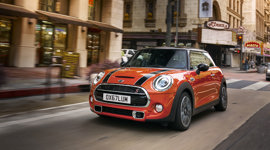
Mini Cooper
Developed as a super-efficient little post-war runabout, the Mini Cooper surprised everyone by becoming not only a pop culture icon, but a genuine motorsports contender, and star of the world rally stage. There are myriad variants to choose from, right up to the $40,000+, 228-hp John Cooper Works for the sports car enthusiast. In simple Cooper guise, it’s available as a two-door four-seater, or a five-passenger version with a set of rear passenger doors. Power comes from a 1.5L turbocharged three-cylinder engine mated to a six-speed manual or six-speed automatic transmission with 134 hp and 220 lb-ft on tap. The Mini’s unique styling and extremely fun driving dynamics makes it one of the most likeable cars on the road today. The cartoon character design carries over to the inside, but in a more sophisticated form than it predecessors. There’s plenty of room up front, though rear seating is a bit cramped. The Mini Cooper is the most expensive of our finalist group, but the price is reflected in the well-executed, premium feel of the cabin, extensive list of available features, and a big personality. Standard equipment includes a 6.5-inch infotainment screen, Bluetooth connectivity, keyless start, and faux leather upholstery. Available are heated front seats, SiriusXM satellite radio, a panoramic sunroof, LED headlights with cornering function, navigation, wireless charging, Apple CarPlay and more.
While other cars offer similar space-saving and fuel economy, nothing in its class matches the Mini’s driving dynamics and iconic style. Pricing starts at $24,490 for the three-door model and $25,890 for the five-door model. Fuel economy is rated at 8.7 L/100 km city, 6.8 L/100 km highway, and 7.9 L/100 km combined (automatic).
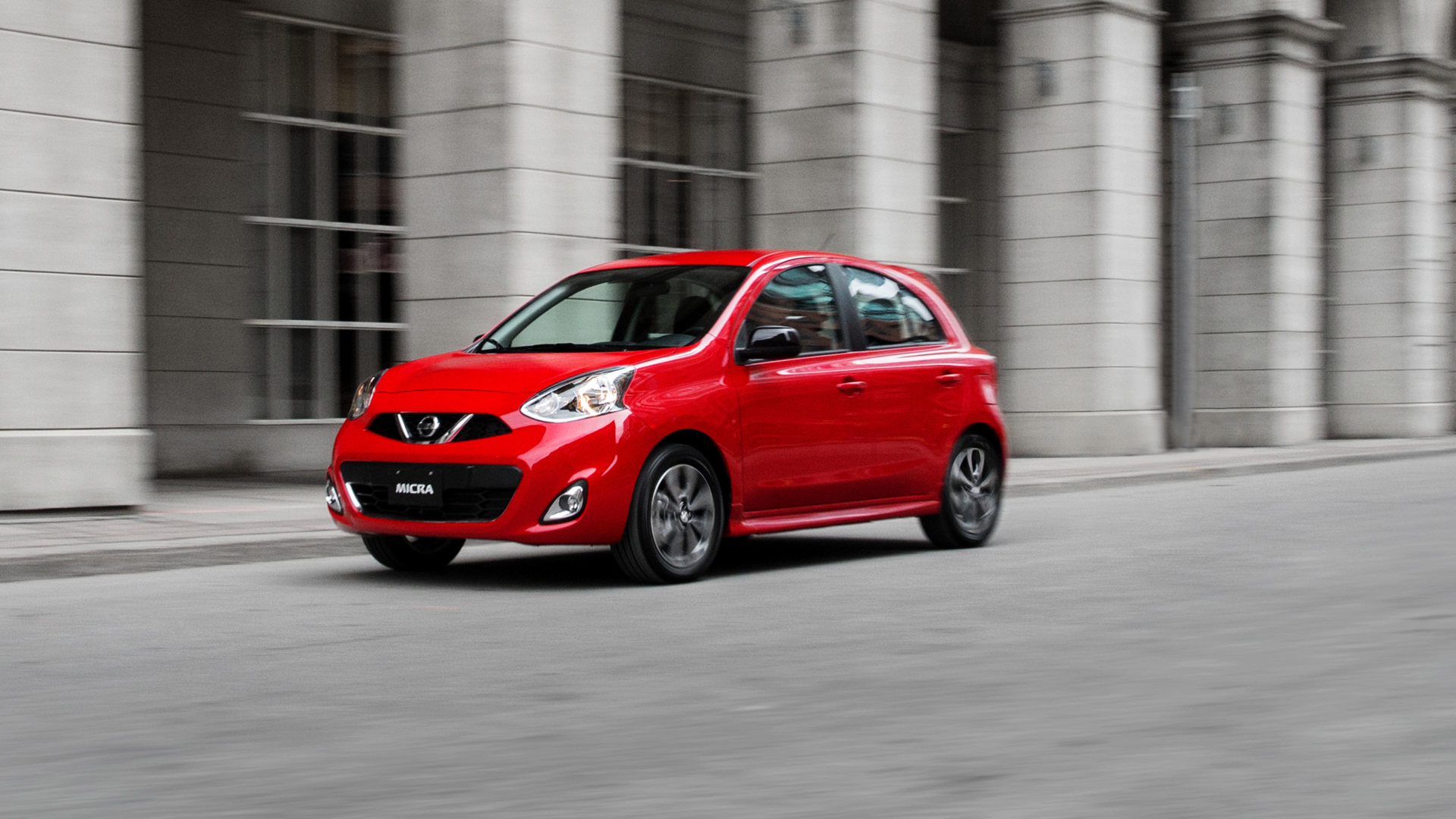
Nissan Micra
When the Micra returned to Canada in 2015 after a nearly two-decade absence, its $9,998 price tag made it Canada’s lowest-priced car. Today, thanks to the mandatory inclusion of a backup camera, the base Micra rings in at $10,488, losing its title to the Chevrolet Spark by less than $500. But that still impressively low price refers to the base model S, with five-speed manual, am/fm radio, aforementioned rearview camera, and roll-your-own windows. In order to get an automatic transmission, or even a modicum of comfort features, buyers will have to shell out an extra $5,000 for the mid-range SV. It features cruise control, air conditioning, power windows and door locks, remote keyless entry, and illuminated steering wheel controls. For $17,598, you can add 16-inch aluminum wheels, “sport cloth” seats, leather-wrapped steering wheel, rear spoiler, and fog lights. Thanks to the backup camera mandate, every Micra now features a seven-inch touchscreen infotainment system with Bluetooth. But there’s no navigation, nor Apple CarPlay/Android Auto available on any model – features that are available on all competitors.
However, the tiny Micra is a blast to drive. At 11 feet long, it’s a cinch to park and its 4.6-metre turning circle makes it one of the handiest city cars on the market. There’s only one engine available: a 1.6L four-cylinder making 109 hp and 107 lb-ft of torque.
Over rough roads, the Micra’s better damped than you’d expect a $10,000 car to be, but the engine gets pretty buzzy when it’s working hard. Still, it’s a fairly pleasant environment, with plenty of overhead room and good visibility – a must in city traffic. Thanks to specially tweaked suspension and Canada-only front and rear sway bars, the Micra’s pretty stable during such unexpected manoeuvres and handles quite well. If you don’t mind forgoing a few luxuries, the Nissan Micra is the ideal urban runabout; fun to drive and easy on the pocketbook. Pricing ranges from $10,488 to $17,598 and fuel economy is 8.9 L/100 km city, 6.8 L/100 km highway, and 8.0 L/100 km combined (automatic).
